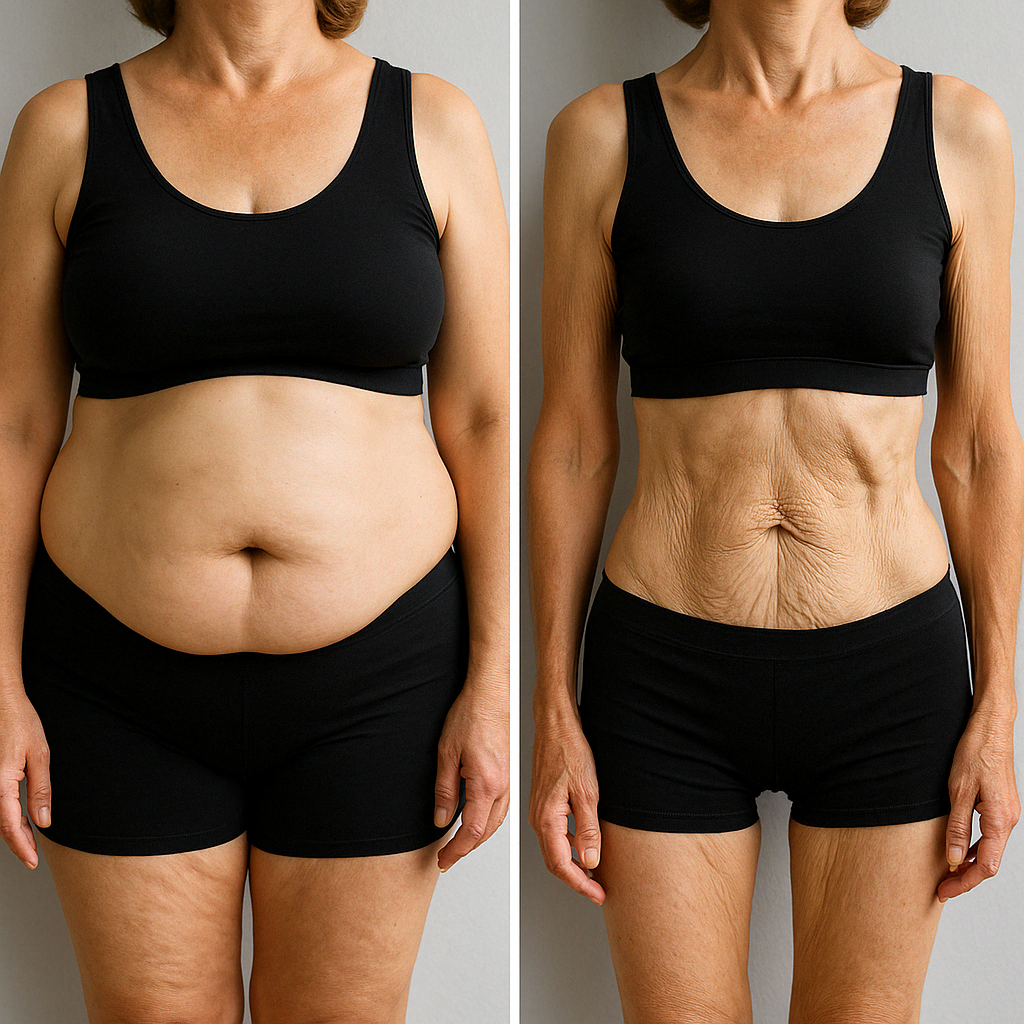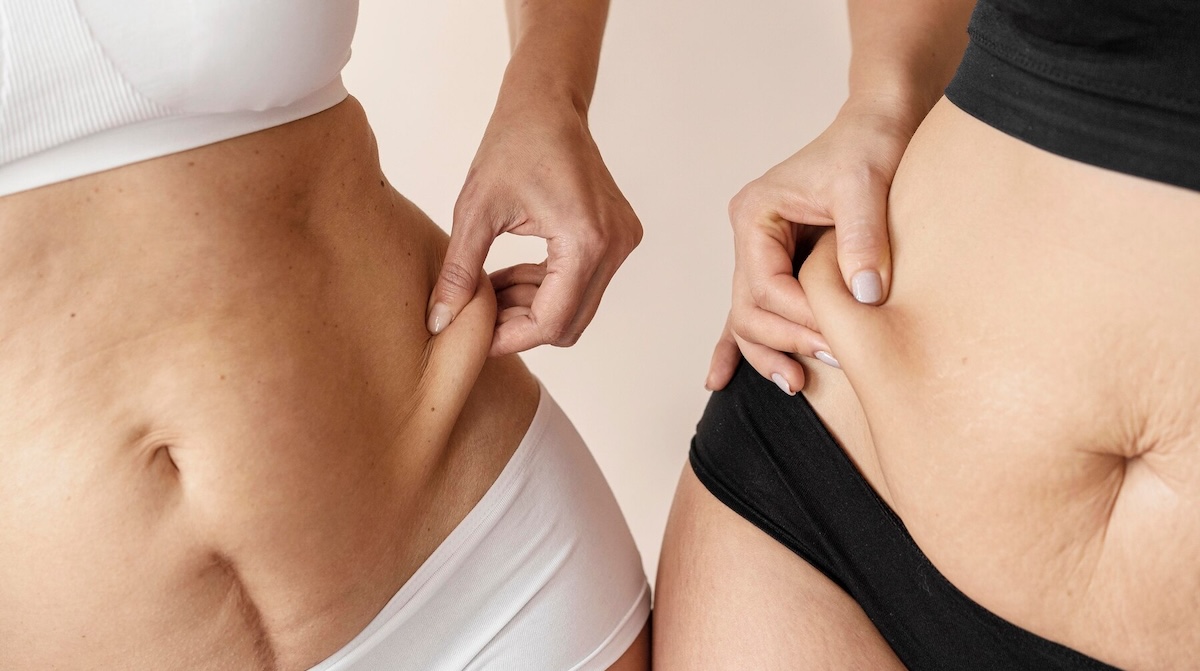Losing a lot of weight is a big accomplishment and a life-changing event. Many people over the age of 40 decide to take control of their health by losing extra weight, whether through diet, exercise, or bariatric surgery. However, after dropping 50, 60, or even 100 pounds, a new problem may appear: loose, sagging skin.

This can be frustrating. You’ve done all the hard work, but your body might not look the way you hoped. So, why does loose skin happen? And what can you do about it?
Why Does Loose Skin Appear?
As we gain weight, our skin stretches to make room for the extra fat. When that weight is lost, especially after many years, the skin doesn’t always shrink back. That’s because skin is made of proteins like collagen and elastin, which give it firmness and flexibility. But as we age, our bodies produce less of these proteins.
This means:
- Less elasticity
- Slower skin recovery
- Higher chance of sagging after weight loss
If you were overweight or obese for a long time and then lost a large amount of weight, your skin may not be able to “snap back” into place—especially after age 35 or 40.
Factors That Affect Loose Skin 🧬
Several things can increase your risk of having loose skin:
- Age: After 40, skin elasticity decreases naturally.
- Amount of weight lost: More than 40 kg (90 lbs) often leads to noticeable loose skin.
- Duration of obesity: The longer your skin stayed stretched, the less likely it is to tighten on its own.
- Speed of weight loss: Quick weight loss (common with surgery) increases the chance of sagging skin.
- Genetics: Some people simply have more elastic skin than others.
- Lifestyle habits: Smoking, dehydration, and poor diet can affect skin health.
Can Exercise Help? 🏃♂️
Exercise is great for your health and can tone muscles underneath the skin, which may improve appearance. Strength training, in particular, builds muscle mass and can help “fill in” some loose areas. But exercise cannot remove excess skin.
It’s important to know that no amount of working out will make loose skin disappear completely if the skin has lost its elasticity.
Skin Care and Non-Surgical Options 💡
For mild skin sagging, some treatments may help, such as:
- Firming creams (look for ones with retinol or collagen boosters)
- Radiofrequency or laser treatments (stimulate collagen)
- Ultrasound skin tightening
- Massage and dry brushing
These options may improve the skin’s appearance slightly, but results are often limited, especially after major weight loss.
Surgical Options: The Most Effective Solution 🔪
For people with significant loose skin, plastic surgery is usually the most effective option. This is often called body contouring surgery or skin removal surgery.
Common procedures include:
- Tummy tuck (abdominoplasty)
- Arm lift (brachioplasty)
- Thigh lift
- Lower body lift
- Breast lift or reduction
These surgeries remove the excess skin and reshape the body for a firmer, more youthful look. Many people choose to have them after bariatric surgery or other major weight loss efforts.
Who Is a Good Candidate for Surgery? ✅
You may be a good candidate if:
- You are in good overall health
- Your weight has been stable for 6–12 months
- You don’t smoke
- You have realistic expectations
Talk to a certified plastic surgeon who has experience with post-weight loss patients.
Final Thoughts 💬
Losing weight is an incredible achievement, especially later in life. But if you’re dealing with loose skin, you’re not alone—and you’re not out of options. From lifestyle changes to surgical solutions, there are ways to reclaim your confidence and enjoy the results of your transformation.
If you’re interested in learning more about your options, don’t hesitate to reach out to a professional who can guide you through the next steps.
By Psych. Dave H. for MediHealth Mexico
References:
American Society of Plastic Surgeons. (n.d.). Body contouring after major weight loss. https://www.plasticsurgery.org/reconstructive-procedures/body-contouring
Kitzinger, H. B., Abayev, S., Pittermann, A., Karle, B., Lumenta, D. B., & Frey, M. (2012). After massive weight loss: patients’ expectations of body contouring surgery. Obesity Surgery, 22(4), 544–548. https://doi.org/10.1007/s11695-011-0509-8
Rohrich, R. J., & Gosman, A. A. (2006). Skin and soft tissue changes associated with aging. Clinics in Plastic Surgery, 33(1), 21–33. https://doi.org/10.1016/j.cps.2005.08.006
Zuelzer, H. B., & Dumanian, G. A. (2013). Body contouring. In Neligan’s Plastic Surgery (3rd ed., Vol. 6, pp. 265–289). Elsevier Saunders.
Mayo Clinic. (2023). Weight loss: 6 strategies for success. https://www.mayoclinic.org/healthy-lifestyle/weight-loss/in-depth/weight-loss/art-20047752
Lockwood, T. E. (2004). Lower body lift with superficial fascial system suspension. Plastic and Reconstructive Surgery, 113(1), 182–194. https://doi.org/10.1097/01.PRS.0000095959.96540.84

